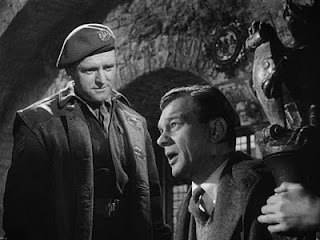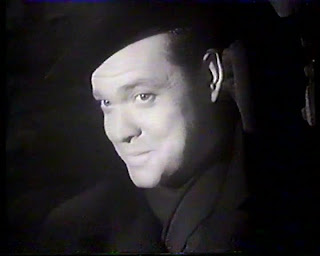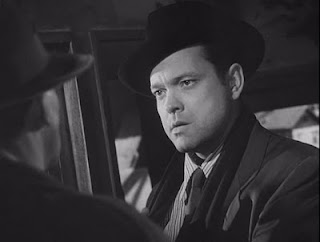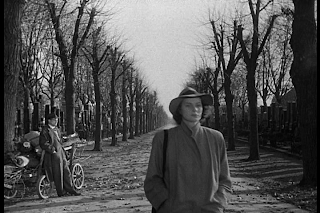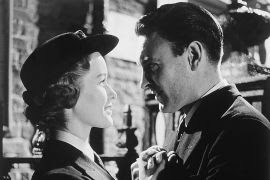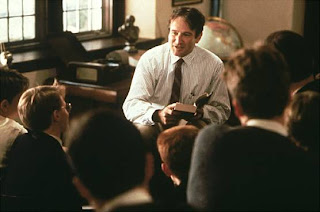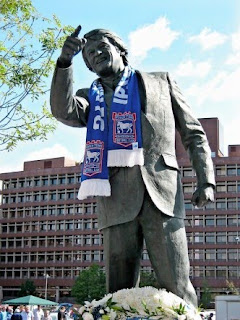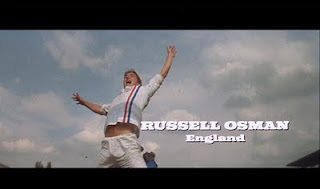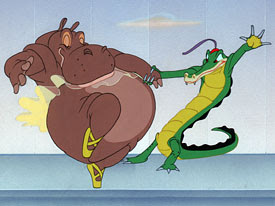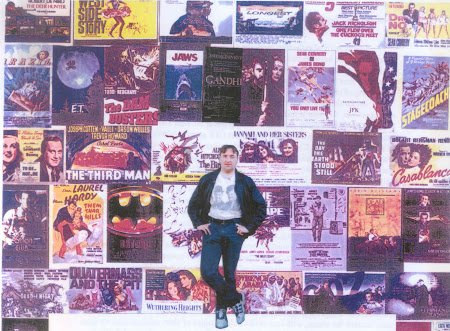 Cinema thrives on innovation: right from when audiences ducked in horror at the sight of the Lumiere brothers' steam train coming towards them; The Jazz Singer was as much about the introduction of sound as about the story of a Rabbi's son's rise to redemption; in 1952 audiences gazed in wonder when This is Cinerama introduced the wonders of widescreen cinema; most recently James Cameron's Avatar has showcased the latest in state-of-the-art 3D animation.
Cinema thrives on innovation: right from when audiences ducked in horror at the sight of the Lumiere brothers' steam train coming towards them; The Jazz Singer was as much about the introduction of sound as about the story of a Rabbi's son's rise to redemption; in 1952 audiences gazed in wonder when This is Cinerama introduced the wonders of widescreen cinema; most recently James Cameron's Avatar has showcased the latest in state-of-the-art 3D animation. Cartoon animation in particular - most especially cartoon characters mixed with live actors - has also been one of cinema's little fascinations: in the 1910's American showman Winsor McCay animated himself into the adventures of Gertie the Dinosaur, and Max Fleischer's Out of the Inkwell cartoons frequently had the main characters dipping their toes into the live action photographic world. There were major feature film examples such as Disney's Three Caballeros, Dangerous When Wet and Anchors Aweigh (the last two featuring Tom & Jerry). Up until 1988 the most notable example of animation mixed with live action was the chalk drawing adventure in Mary Poppins - but all of these were used as novelty interludes, and never dared to make a whole feature film in the process.
Who Framed Roger Rabbit topped all these animation milestones, but was a very enjoyable film too, for all that. Innovation is its keynote, but there's a great deal of charm in the enterprise, right from the moment of its opening "Maroon Cartoon" prologue, a slightly over-imaginative pastiche of Tex Avery and Tom & Jerry, which is suddenly halted by an irate shout of "Cut! Cut!" from an angry director (played by film producer Joel Silver), because one of his cartoon actors (aka. "toons") is not following instructions in the script - he should be concussed with stars in his eyes, not birds! We are then instantly transported into another world, where cartoon characters intermingle in the real world of 1940's Hollywood, with all the town's trappings and dangers.
As a cinematic novelty as well as a rattling good entertainment, a great deal of the credit has to go to three men - or at rough count, four. The fourth in question is someone called Steven Spielberg, who enthused about the project as a semi-tribute to Walt Disney and suggested it to his friend and disciple Robert Zemeckis, after the pair were looking for something to top the highly successful Back to the Future.
That was back in 1985, around which time Britain's top emerging character star was Bob Hoskins - the second key player in the making of Roger Rabbit - who gives an acting masterclass in how to perform alongside special effects. Nowadays it is quite commonplace for actors to work with non-existent characters created by CGI, but few of them can do it so well. Hoskins' acting technique has always been based on simple essentials: for the adventurous challenge of acting in a film with "nothing", he simply studied how his two children would play games at home with imaginary friends. Together with Zemeckis's technical assistance (and the presence of Roger's voice on-set), Hoskins brought his kudos as a tough guy of British cinema (in films such as The Long Good Friday and Mona Lisa), giving the film that extra edge, and to my delight, making what was at the time a rare family-type film for his bullet-headed personality.
Like Bugsy Malone was an affectionate spoof of gangster films using children and ice cream guns, so Roger Rabbit is a nostalgic pastiche of the Philip Marlowe detective thriller with cartoon weasels for goons, and a very oversexed femme fatale in the shape of Mrs Jessica Rabbit ("I'm
 not bad, I'm just drawn that way"), suitably voiced by a husky Kathleen Turner (and also sung seductively by Spielberg's ex-wife Amy Irving.) Her frankly improbable figure is already well celebrated on the Internet, so there's no need for me to go into any further details, suffice to say she makes Marilyn Monroe's distinctive hour glass figure look positively ample by comparison.
not bad, I'm just drawn that way"), suitably voiced by a husky Kathleen Turner (and also sung seductively by Spielberg's ex-wife Amy Irving.) Her frankly improbable figure is already well celebrated on the Internet, so there's no need for me to go into any further details, suffice to say she makes Marilyn Monroe's distinctive hour glass figure look positively ample by comparison.The only slight drawback to Who Framed Roger Rabbit really, is Roger Rabbit himself. Irritatingly voiced by Charles Fleischer, the character is something of an amalgam of styles - from Tex Avery to Looney Tunes - with no substantial identity of his own. It's interesting 20 years later to compare the relation Roger has in the film to Jar-Jar Binks in The Phantom Menace years later, where in both cases a tremendous amount of expertise and special effects were at work, and most of the effort was spent just making the character able to appear on screen - although in Roger's case what's going on around him is much more interesting - and nostalgic.
 Roger and Valiant hide in a cinema (showing cartoons of course), filmed at the State cinema, Grays (below)
Roger and Valiant hide in a cinema (showing cartoons of course), filmed at the State cinema, Grays (below) 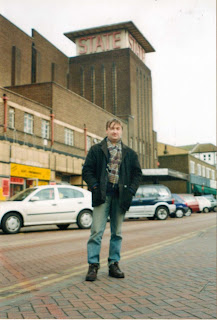 Detractors of the film have said that the plot is thin; far from it, it's just that the cartoon part is the "showpiece". Indeed, there's a good deal of Chinatown-style complexity to the corporate conspiracy sub-plot (the dismantling of the tramcars to make way for the freeways) that screenwriters Jeffrey Price and Peter Seaman added to Garry K. Wolf's original story ("Who Censored Roger Rabbit"), investing a nice element of whimsy for the bygone era of 1940's California, now long gone: the end of an era for the great detective thriller, but the beginning of the coming of age for cartoons.
Detractors of the film have said that the plot is thin; far from it, it's just that the cartoon part is the "showpiece". Indeed, there's a good deal of Chinatown-style complexity to the corporate conspiracy sub-plot (the dismantling of the tramcars to make way for the freeways) that screenwriters Jeffrey Price and Peter Seaman added to Garry K. Wolf's original story ("Who Censored Roger Rabbit"), investing a nice element of whimsy for the bygone era of 1940's California, now long gone: the end of an era for the great detective thriller, but the beginning of the coming of age for cartoons.Admittedly the intriguing plot settles down in the end to a simple case of Good versus Evil, of which it's pretty clear who the chief antagonist is: Christopher Lloyd was reunited with Robert Zemeckis after playing the likeably bonkers scientist Dr. Emmet Brown in Back to the Future, but his Judge Doom had very little sentiment and a great deal of Darth Vader-like menace about him. Younger audiences be warned: one scene where Doom dispatches a toon shoe using a sinister combination of chemicals - turpentine, acetone & benzine (used to remove paint from celluloid), nicknamed "Dip" - had some little kiddies weeping in their seats when I saw the film in cinemas in 1988.
 The monumental technical challenge of filming an entire feature with the animated part still to follow, was akin to "making an Invisible Man movie" for Spielberg and Zemeckis (and Hoskins apparently suffered from hallucinations for weeks after shooting finished), but the 2-year wait while the animators got to work, was well worth it.
The monumental technical challenge of filming an entire feature with the animated part still to follow, was akin to "making an Invisible Man movie" for Spielberg and Zemeckis (and Hoskins apparently suffered from hallucinations for weeks after shooting finished), but the 2-year wait while the animators got to work, was well worth it.Some 700 people - a record number listed on the end credits - pooled together to create this amusing masterpiece of illusion. And not only were the names confined to those off-camera. As a unique coup of cartoon casting, Spielberg brought together the star toons from both the Disney and Warner Brothers studios (together with or two extra guests suc
 h as Betty Boop and Droopy). There they all are, littered through the film in guest cameos: Goofy, Dumbo, Pinocchio, Bugs Bunny (how interesting if the film had been about that rabbit instead), Tweetie Bird, Yosemite Sam, Porky Pig, the broomsticks and hippos and ostriches from Fantasia, and of course Mickey Mouse, and my favourite of the bunch, Donald and Daffy Duck playing Liszt's Hungarian Rhapsody at The Ink & Paint Club.
h as Betty Boop and Droopy). There they all are, littered through the film in guest cameos: Goofy, Dumbo, Pinocchio, Bugs Bunny (how interesting if the film had been about that rabbit instead), Tweetie Bird, Yosemite Sam, Porky Pig, the broomsticks and hippos and ostriches from Fantasia, and of course Mickey Mouse, and my favourite of the bunch, Donald and Daffy Duck playing Liszt's Hungarian Rhapsody at The Ink & Paint Club. All were presided over by the third and by no means last and least hero of Roger Rabbit: the sanguine figure of Richard Williams had been animating countless commercials and short films in Britain as well as imaginative title sequences for the Pink Panther films and The Charge of the Light Brigade among others. With Roger Rabbit, his consistently brilliant animation was deservedly given a wider audience (and also enabled him to pursue his cherished dream of finishing his own epic feature film, The Thief and the Cobbler).
All were presided over by the third and by no means last and least hero of Roger Rabbit: the sanguine figure of Richard Williams had been animating countless commercials and short films in Britain as well as imaginative title sequences for the Pink Panther films and The Charge of the Light Brigade among others. With Roger Rabbit, his consistently brilliant animation was deservedly given a wider audience (and also enabled him to pursue his cherished dream of finishing his own epic feature film, The Thief and the Cobbler).Director Zemeckis, skilfully aided by Dean Cundey who photographed with an eye for the missing pieces (in much the same way as he later did with Jurassic Park), gave Williams the perfect canvas with which to weave his magic. Who Framed Roger Rabbit will be his lasting legacy. Not a bad one to have either.



